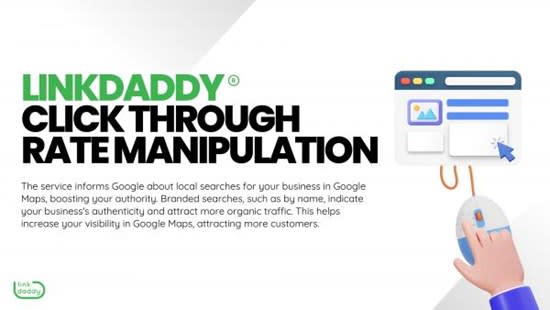CTR Control: A Video Game Changer for Digital Projects
The surge of CTR control has actually undeniably transformed digital marketing strategies, supplying online marketers with tools to enhance interaction and drive website traffic successfully. Strategies such as A/B screening and customized content have confirmed to generate significant renovations in click-through prices. As brands significantly utilize these techniques, the ethical implications of such methods warrant analysis. Balancing the pursuit of maximized metrics with the requirement for authentic target market connections poses a crucial obstacle for marketing experts today. What effects might this balancing act hold for the future of digital projects?
Understanding CTR Manipulation
Although click-through price (CTR) adjustment may appear like an uncomplicated technique in electronic advertising, it includes a variety of strategies targeted at unnaturally pumping up interaction metrics. This manipulation can take various kinds, including making use of click farms, crawlers, or deceptive ad positionings that misinform consumers right into clicking. These techniques can compromise the stability of efficiency data, making it challenging for marketing experts to evaluate the real effectiveness of their campaigns.
Moreover, CTR control elevates honest problems, as it undermines the transparency of electronic marketing. The dependence on inflated metrics can result in illinformed advertising and marketing decisions, skewing resource allotment and project methods. Services might invest greatly in networks and strategies that show up effective yet do not generate actual involvement or conversions.

Benefits of Click-Through Rate Optimization
Optimizing click-through rate (CTR) is essential for enhancing the efficiency of electronic advertising and marketing projects. A higher CTR suggests that a larger proportion of individuals are engaging with the material, which can bring about boosted web site web traffic and much better conversion prices. By improving CTR, brand names can successfully assign their marketing resources to initiatives that produce the highest possible returns.
One of the main advantages of CTR optimization is the possibility for boosted advertisement positioning and reduced prices - CTR Manipulation. Systems like Google Advertisements compensate greater CTRs with much better ad positioning and reduced cost-per-click (CPC), permitting online marketers to extend their budget plans additionally. Additionally, a well-optimized CTR can boost brand presence, as greater engagement prices often associate with boosted organic reach

Techniques for Reliable CTR Manipulation
To successfully manipulate click-through prices (CTR), online marketers can use a variety of calculated strategies that enhance individual engagement and drive web traffic. One basic approach is enhancing advertisement copy to produce engaging and action-oriented language. CTR Manipulation. Utilizing strong call-to-action (CTA) expressions encourages users to take instant activity, increasing the probability of clicks
An additional effective method is A/B screening, which allows marketing professionals to contrast Clicking Here various ad variations. By systematically examining efficiency metrics, they can determine which aspects reverberate best with the target audience, consequently improving their strategies for maximum effect. In addition, leveraging visually appealing graphics and concise messaging can catch attention quickly, making it more probable that individuals will certainly engage.

Last but not least, enhancing landing pages to make sure a smooth customer experience can reduce bounce rates and encourage further interaction, ultimately fostering higher CTR. By incorporating these techniques, marketing professionals can effectively control CTR to accomplish their project goals.
Gauging Success in Digital Campaigns
Measuring success in digital projects calls for a clear understanding of crucial efficiency indications (KPIs) that straighten with project objectives. KPIs function as quantifiable metrics that help examine the efficiency of various techniques utilized throughout the campaign. Typical KPIs include click-through prices (CTR), conversion prices, cost per procurement (CPA), and roi (ROI)
To successfully measure success, it is important to develop certain, quantifiable goals first of the project. If the main objective is to raise brand understanding, metrics such as impressions and interaction prices might be focused on. In contrast, projects focused on direct sales would take advantage of a much more detailed evaluation of conversion rates and profits generated.
Routine evaluation of these KPIs allows marketers to make data-driven choices, optimizing their approaches in real-time. Using analytical tools can help in monitoring efficiency and recognizing patterns, permitting for speedy modifications to enhance project end results. Eventually, a comprehensive method to measuring success not just highlights areas for improvement but likewise strengthens the total efficiency of electronic marketing initiatives, driving sustained development and engagement in the long-term.
Future Trends in Digital Advertising
Anticipating the future of electronic marketing discloses a landscape formed by rapid technological advancements and transforming customer habits. As expert system and machine knowing proceed to develop, More Help marketers will increasingly take advantage of these modern technologies to personalize campaigns at an unmatched scale. Anticipating analytics will certainly allow brands to anticipate client demands, enhancing advertisement placements and material shipment in actual time.
Additionally, the surge of voice search and clever tools is transforming just how customers communicate with digital content. Online marketers will need to adjust their strategies to ensure visibility throughout numerous systems, including voice-activated assistants. This shift requires a focus on conversational marketing, stressing involvement through dialogue instead of conventional marketing methods.
Additionally, personal privacy worries are triggering changes in data collection methods. Openness and ethical information usage will become extremely important, driving brand names to foster depend on and loyalty among consumers. The ongoing see it here advancement of social networks platforms will certainly likewise affect advertising and marketing techniques, with an enhanced focus on authenticity and user-generated web content.
Verdict
In recap, CTR manipulation stands for a considerable development in electronic advertising and marketing methods, using prompt advantages with enhanced involvement metrics. The honest considerations bordering such practices require a careful approach to guarantee lasting brand integrity and real audience link. By striking an equilibrium between optimization techniques and genuine involvement, marketing professionals can grow sustainable relationships with customers. The recurring development of digital advertising will rely on this fragile interplay, shaping the future landscape of brand-consumer interactions.